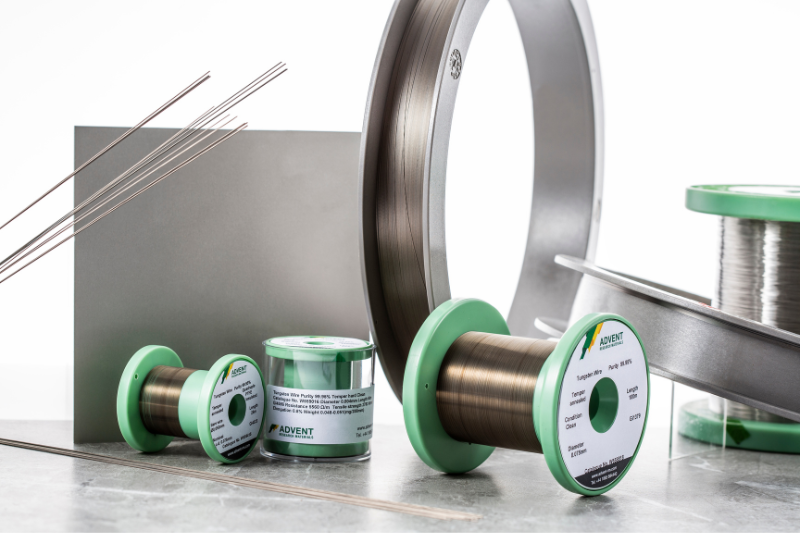Tungsten
Advent Research Materials is a leading supplier of Tungsten.
Our catalogue of Tungsten (W) products makes it easy to buy online and includes multiple pure metal forms including Tungsten Foil, Tungsten Insulated Wire, Tungsten Insulated Wire - Straight Cut Lengths, Tungsten Plated Wire, Tungsten Ribbon, Tungsten Rod, Tungsten Sheet, Tungsten Wire, Tungsten Wire - Straight Cut Lengths and Tungsten WOVEN Mesh / Gauze.
Why Buy Tungsten?
Tungsten has a very wide range of appliactions in a variety of industries that make it a highly used element. Tungsten is a hard, grey coloured metal, which is one of the heaviest elements. It has a melting point of 3,422 degrees Celsius – the highest of all the elements – and a boiling point of 5,555 degrees Celsius. The element is found naturally on Earth in only chemical compounds.
Tungsten is very brittle and difficult to work due to the weak grain boundaries present in its polycrystalline form. In order to make the element more pliable, single-crystalline tungsten can be used, making it easier to draw, forge and extrude the material.
The two crystallographic forms in which tungsten exists are α and β. The α form is body centered cubic and is the more stable of the two. It is a low superconductor, showing exactly zero resistance to electrical currents, and the expulsion of magnetic fields once it reaches below its ‘critical temperature’. The β form of tungsten is a metastable structure, which exists in columnar grains, rather than the isometric grains of the α form. This allows the element to be more pliable. The β phase exists in a crystallographic structure called A15 cubic.
By mixing together the two different crystallographic forms of tungsten (α and β), it increases the superconducting transition temperature TC above that of the stable α form. Alloying tungsten with other metals can also produce an increase in the superconducting transition temperature, making such alloys useful in superconducting circuits in low temperatures.
Tungsten has the ability to maintain its strength in high temperatures. It has inertness to oxygen, acids and alkalis, and has a very high density (19.3 grams per cubic centimeter). It has the lowest vapour pressure, the highest tensile strength and the lowest coefficient of expansion of any pure metal.
There are several uses for tungsten that take advantage of its key properties. The main application being its use in filaments; ranging from your regular household light bulb through to filaments in X-ray tubes and electron microscopes. Tungsten is the ideal material choice for the filament because it has the highest melting, the lowest vapour pressure, the lowest coefficient of thermal expansion, the highest tensile strength of all the metals and an ability to maintain this strength at high temperatures.
Tungsten's high density and hardness also makes it useful in military applications such as rocket engine nozzles. Tungsten's high desnity also makes it a good choice for creating shields to gamma radiation.
.png?width=50)
Tungsten Ribbon
| Line Number & Material | Thickness | Purity | Description | |
|---|---|---|---|---|
| W2328 Tungsten Ribbon | 0.025 mm | 99.95% | Width 0.25mm. Temper as rolled. | View item |
| W2330 Tungsten Ribbon | 0.025 mm | 99.95% | Width 1mm. Temper as rolled. | View item |
| W2335 Tungsten Ribbon | 0.13 mm | 99.95% | Width 2mm. Temper as rolled Finish Bright. | View item |
| W2340 Tungsten Ribbon | 0.13 mm | 99.996+% | Width 1.4mm. Temper as rolled Finish Bright. | View item |
| W2338 Tungsten Ribbon | 0.178 mm | 99.95% | Width 1.355mm. Temper as rolled Finish Bright. | View item |
| W2336 Tungsten Ribbon | 0.225 mm | 99.95% | Width 1.355mm. Temper as rolled Finish Bright. | View item |